As we delve deeper into major innovations of earliest technologies in the archaeological record, TBI Origin Field School students have learnt to appreciate the importance of meticulously recording and analyzing data. The archaeological record involving stone tool technology is characterized by changes in production and form of artefacts, and through detailed studies we can understand how these forms are categorized. Understanding the technological capabilities of hominins helps us define major phases and cultural abilities of these early humans.
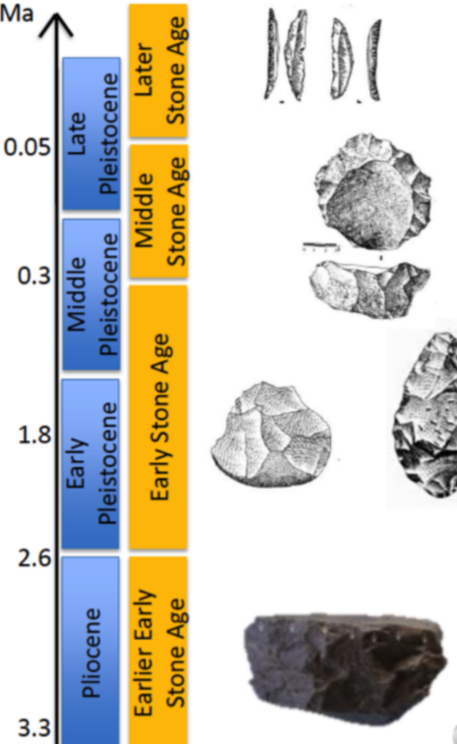
A chronology of stone tool industries.
We learn that early humans utilized different materials and methods to develop tools as an adaptive strategy to deal with the environmental stresses and changes. While at TBI-Turkwel, students visit archaeological and palaeoanthropological sites on the west side of the lake. On the way to Nariokotome for a camping trip, they make a stop at the Namortung’a pillar site in Kalakol to learn about these Holocene structures that have immense cultural and historic significance for the Turkana people. Later on, they visit the Early Pleistocene sites at Lokalalei 2C to practice surveying. The following days at Nariokotome are spent visiting the Turkana Boy monument, where the fossil skeleton of Homo ergaster (KNM-WT 15000) was found. Students finish their trip by touring the Kokiselei site complex, where students survey through sites rich in stone tools from different time periods. Interestingly, these sites shows transition from Oldowan to Acheulean tool assemblages.
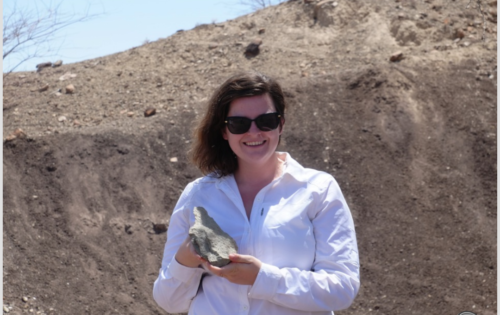
Dr. Hilary Duke holding a large cutting tool at Kokiselei 4.
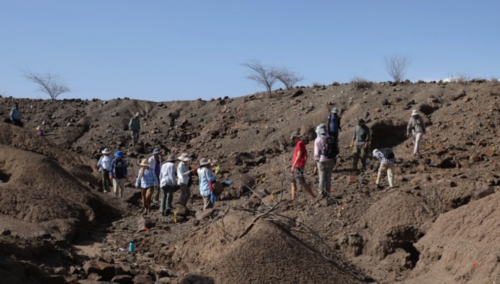
Past field school students at Lokalalei 2C looking for artefacts. Photo credit: Deming Yang
Prof. Lisa Hildebrand has been taking the students through the stone tool technological industries with detailed virtual information of these sites and their associated materials. The earliest innovations were simple tools made by removing a few flakes from a pebble/cobble core for cutting, as in the case of the Lomekwian tools, the oldest in the world, dating to about 3.3 mya. With time, early humans started to make tools that involved removal of flakes from one side of the core (unifacial) to make a single usable edge, presumably for cutting, scraping, and chopping, as evident in the Oldowan industry. We see a technological leap forward in the bifacial stone tools in the Acheulean industry. The handaxe is the typical tool of this industry, with flaked surfaces on both sides, forming sharp cutting edges.
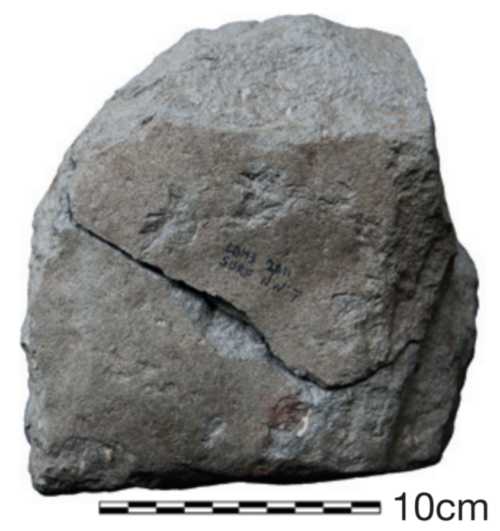
A unifacial Lomekwian core with a refitted flake.
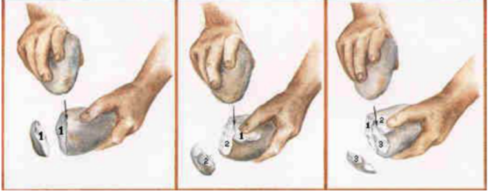
An illustration of flake removal in Oldowan industry.
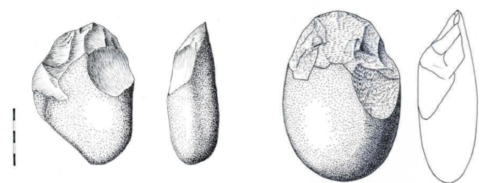
Oldowan tools that could have been used as chopping tools.
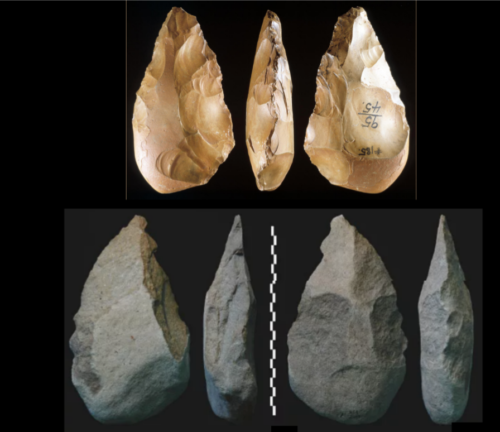
Acheulean biface tools commonly known as handaxes.
Our ancestors developed new skills to cope with pressures of environmental change. The shaping of tools did not stop with the Acheulean, but rather we see a continuation of shaping tools into more complex and highly efficient ones as exemplified by the Levallois technique. The defining feature of this technique is core preparation, which involves striking pieces off a core, and carefully sculpting it in to two asymmetrical surfaces, and later striking the core in a manner that a single large flake would be broken off. The technique was practiced across a wide geographic region, from Africa to Europe.
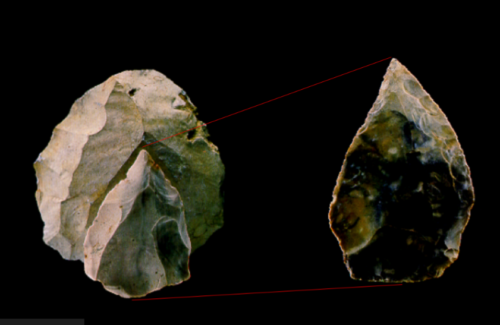
Prepared-core technique/Levallois. The large flake is removed from a prepared-core.
Students also learnt from Prof. Hildebrand about blade technology, invented during the Middle Stone Age and later elaborated in the Later Stone Age. Blades were made by carefully detaching long rectangular flakes from cores that were particularly sharp. This time period also witnessed greater development in culture, with practices in burials, shelters, and even group cooperation in hunting. These technological trajectories reflect continuous adaptive strategies of early humans for survival.
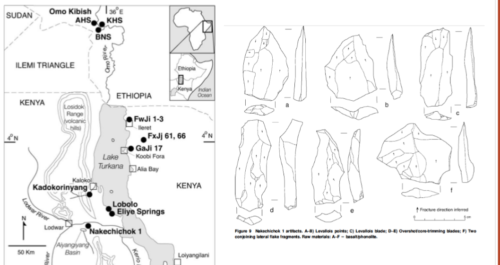
Illustrations of blades from Nakichechok site in Turkwel.
Special thanks to Dr. Hilary Duke and Prof. Sonia Harmand for contributions to this post! More to follow on the Holocene practices in the Turkana Basin.





